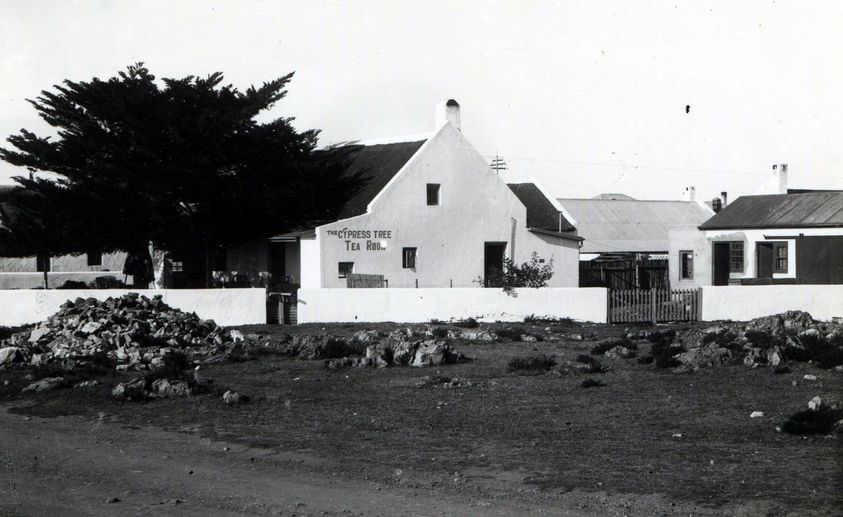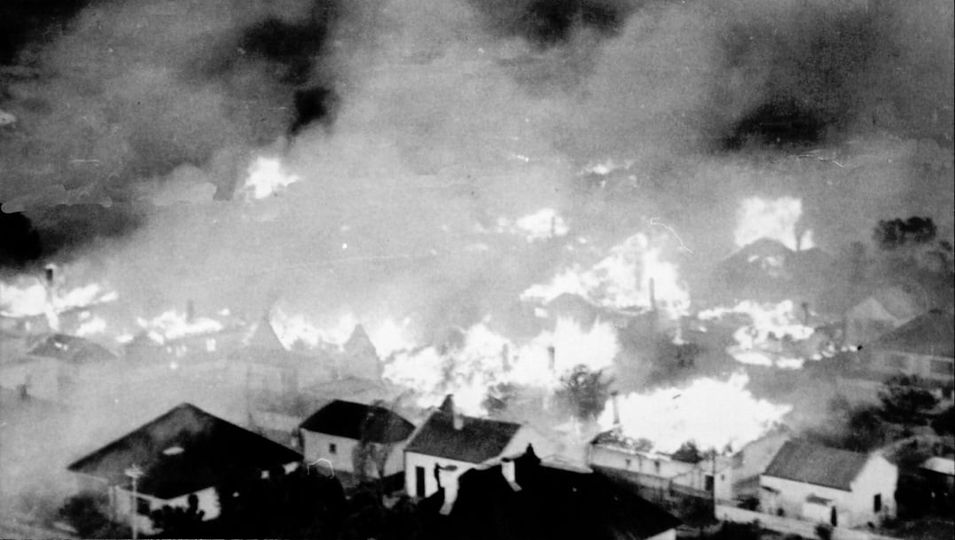
The Cypress Tree Tea Gardens
January 19, 2022
GREAT FIRES OF HERMANUS
January 19, 2022The territory now occupied by the Overstrand Municipality, including Hermanus, has experienced fire for millions of years. The first fires occurred for natural reasons, most often due to lightning strikes. No human beings witnessed the strikes, and the vegetation slowly adapted to these events.
The various plants we include in the designation ‘fynbos’ gradually evolved defences against fire, for instance, by developing thicker bark, as the proteas did. Later, many plants incorporated fire into their reproductive cycle. They began to produce seeds that needed the heat of specific types of fire and the smoke to germinate. This fact was only discovered recently by experimentation at Kirstenbosch, but it now forms a central part of any managed area of fynbos, such as Fernkloof Nature Reserve.
It appears that the optimum period between burns is about 10 and 12 years. However, even then, the fire must be of the correct intensity and create the required volumes of smoke for the fynbos to gain a significant advantage in germination. Rain quite soon after the fire is also helpful.
These fires could be regarded as ‘good’ fires, and they help the conservation of the fynbos. However, since Europeans settled in the area, they have made us vulnerable to ‘bad’ fires that destroy fynbos, livestock, property and, occasionally, human lives.
The primary way they unwittingly caused more ‘bad’ fires was to plant alien species of trees, such as pine and eucalyptus, that burn more quickly and at a higher temperature than fynbos. A fire fed by aliens destroys fynbos and spreads more rapidly to areas settled by humans.
They also cleared vast areas of natural vegetation and built houses, hotels and shops close to places that had experienced ‘good’ fires for millennia. Even a ‘good’ fire started by natural forces becomes dangerous once it gets into settled areas. And over the years, Hermanus has had many fires of this kind.
They made themselves more vulnerable without knowing it by choosing the roofing material. They decided to use ‘thatch’ for roofing. Admittedly, not many options were available to the early settlers, and there are many advantages to thatch over other materials, not least of which is cost. Natural thatching material can be gathered for free. It is a good insulator, is water- and wind-resistant if properly laid.
In the Overberg, the natural choice was a member of the restionacea family, with the botanical name of ‘thamnochortus insignus’. It was so prevalent that it was known colloquially as ‘dakriet’. (‘roof reed’)
However, dakriet is relatively flammable and catches fire from embers blown by a wind. A row or street of houses all with thatched roofs of dakriet is easily destroyed, as we shall see.
From the first settlers’ arrival in 1855 to the 1930s, dakriet was universally used. There must have been many fires in the 19th and early 20th centuries, but they went unrecorded. Records of fires in Hermanus and surrounding areas become available from the 1930s onward. Descriptions of early fires have come down to us through an oral tradition from people who witnessed them. Of course, we have no way of verifying the details. Recorded incidents begin in the 1930s, occurred throughout the 1940s and rose to levels not experienced before in the 1950s. The incidence of fires then diminished, for reasons we shall see.
There are two main reasons given for the fires. First, some fires originated in the fynbos and then spread directly to buildings built too close. Secondly, and after electricity had been introduced, the fires mainly developed in one house, through an electrical fault that ignited the thatch of a single dwelling, and the fire then spread to neighbouring homes.
The layout of streets and placement of houses may unintentionally have provided the best arrangement for fires to spread since the thatched houses were relatively close to each other, making it more likely that sparks would leap from one roof to another.
The fire was observed to accelerate if the prevailing wind blew in the same direction as the streets. The wind seemed to pick up speed as it blew along the street, thereby spreading the sparks more widely. In some cases, embers were observed to travel more than 200 metres before landing on a roof and setting it alight.
The first recorded fire occurred in 1936 when a substantial holiday home known as “Roman Rock” was destroyed. The house was situated in Protea Road, in what is now Eastcliff. The 1940s were notable for three devastating fires in hotels. In July 1940, the new Bay View Hotel in Main Road, Eastcliff, was almost destroyed by fire. In 1944, the Cliff Lodge Hotel was burnt down and never rebuilt, while the Riviera Hotel was extensively damaged but reopened later.

